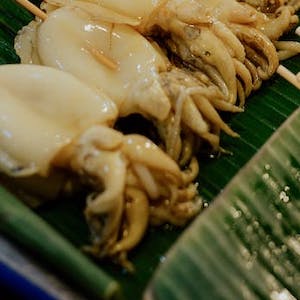Cadmium, lead, and mercury in two commercial squid species from the north Adriatic Sea (central Mediterranean): contamination levels and health risk assessment

Accepted: 1 February 2023
HTML: 7
All claims expressed in this article are solely those of the authors and do not necessarily represent those of their affiliated organizations, or those of the publisher, the editors and the reviewers. Any product that may be evaluated in this article or claim that may be made by its manufacturer is not guaranteed or endorsed by the publisher.
Authors
In this study, lead (Pb), cadmium (Cd), and total mercury (Hg) concentrations in European squids (Loligo vulgaris) and flying squids (Todarodes sagittatus) from the northern Adriatic Sea (Italy) were analyzed. The risk of the Italian population being exposed to potentially hazardous metal concentrations through the consumption of these products was also assessed. Compared to European squids, flying squids showed three times higher total Hg concentrations and one hundred times higher Cd concentrations to the point that more than 6 and 25% of the samples exceeded the maximum Hg and Cd limits established by the current legislation. From the evaluation of dietary exposure levels, it emerged that the consumption of flying squids was associated with the highest Pb intake by children and, consequently, with the lower margin of exposure values in relation to the risk of neurotoxicity (margin of exposure=33). Consumption of flying squids, especially by children, was also associated with higher intakes of Cd, inorganic, and methyl-Hg, which, respectively, accounted for 156, 113, and 23% of the tolerable weekly intakes established for these contaminants at European level. The obtained results raise concern and it may be necessary to provide specific dietary advice on the moderate dietary consumption of some cephalopod species, especially to the youngest and most vulnerable segment of the population. However, besides the highly conservative deterministic method adopted in this study, a refined consumer exposure assessment should be performed through the probabilistic methodology, which is more suitable to represent the real exposure scenario.
How to Cite

This work is licensed under a Creative Commons Attribution-NonCommercial 4.0 International License.
PAGEPress has chosen to apply the Creative Commons Attribution NonCommercial 4.0 International License (CC BY-NC 4.0) to all manuscripts to be published.

 https://doi.org/10.4081/ijfs.2023.11037
https://doi.org/10.4081/ijfs.2023.11037



